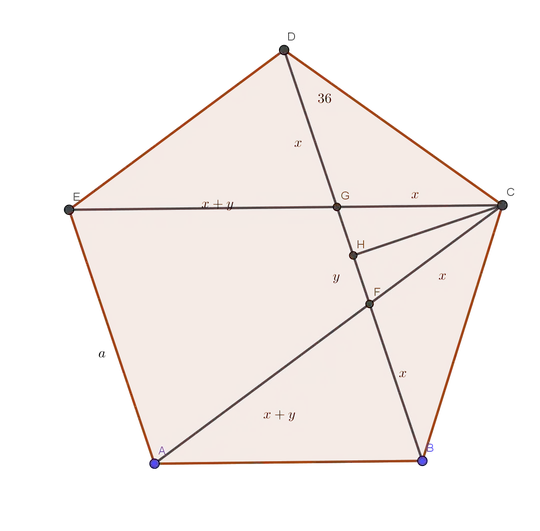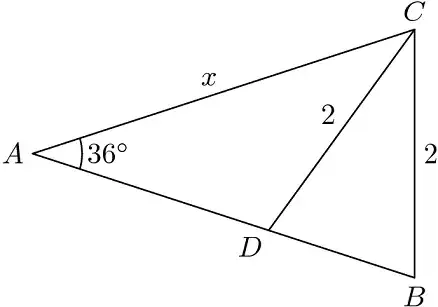If $\sin(18)=\frac{a + \sqrt{b}}{c}$ in the simplest form, then what is $a+b+c$? $$ $$ Attempt: $\sin(18)$ in a right triangle with sides $x$ (in front of corner with angle $18$ degrees), $y$, and hypotenuse $z$, is actually just $\frac{x}{z}$, then $x = a + \sqrt{b}, z = c$. We can find $y$ as $$ y = \sqrt{c^{2}- (a + \sqrt{b})^{2}} $$ so we have $$ \cos(18) = \frac{y}{z} = \frac{\sqrt{c^{2}- (a + \sqrt{b})^{2}}}{c}$$
I also found out that $$b = (c \sin(18) - a)^{2} = c^{2} \sin^{2}(18) - 2ac \sin(18) + a^{2}$$
I got no clue after this.
The solution says that $$ \sin(18) = \frac{-1 + \sqrt{5}}{4} $$
I gotta intuition that we must find $A,B,C$ such that $$ A \sin(18)^{2} + B \sin(18) + C = 0 $$ then $\sin(18)$ is a root iof $Ax^{2} + Bx + C$, and $a = -B, b = B^{2} - 4AC, c = 2A$.
Totally different. This question is not asking to prove that $sin(18)=(-1+\sqrt{5})/4$, that is just part of the solution.

